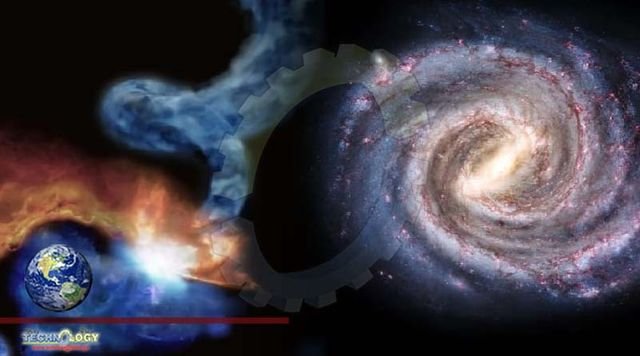Key Building Blocks for Life Discovered in Cloud Near Center of Our Galaxy New research finds that molecular clouds are loaded with key precursors for life on Earth.

Key precursors for life on Earth are abundant in interstellar molecular clouds and could have arrived on Earth inside comets and meteors. Nitriles, a class of organic molecules with a cyano group (a carbon atom bound with a triple unsaturated bond to a nitrogen atom) are typically toxic. But paradoxically, they are also a key precursor for molecules essential for life on Earth, such as ribonucleotides, composed of the nucleobases or ‘letters’ A, U, C, and G joined to a ribose and phosphate group, which together make up RNA. Now, a team of scientists from Spain, Japan, Chile, Italy, and the United States show that a wide range of nitriles occurs in interstellar space within the molecular cloud G+0.693-0.027, which is located near the center of the Milky Way galaxy.
“Here we show that the chemistry that takes place in the interstellar medium is able to efficiently form multiple nitriles, which are key molecular precursors of the ‘RNA World’ scenario,” said Dr. Víctor M. Rivilla, a researcher at the Center for Astrobiology of the Spanish National Research Council (CSIC) and the National Institute of Aerospace Technology (INTA) in Madrid, Spain, and first author of the new study. According to this scenario, life on Earth was originally based on RNA only, and protein enzymes and DNA evolved later. RNA can fulfill both their functions: catalyzing reactions like enzymes, and storing and copying information like DNA. According to the ‘RNA World’ theory, nitriles and other building blocks for life didn’t necessarily all arise on Earth itself: they might also have originated in space and ‘hitchhiked’ to the young Earth inside comets and meteorites during the ‘Late Heavy Bombardment’ period, between 4.1 and 3.8 billion years ago. In support, nitriles and other precursor molecules for nucleotides, lipids, and amino acids have been found inside contemporary meteors and comets.
Cloud Near Center Where in space could these molecules have come from? Prime candidates are molecular clouds, which are dense and cold regions of the interstellar medium, and are suitable for the formation of complex molecules. For example, the molecular cloud G+0.693-0.027 has a temperature of around 100 K and is approximately three light-years across, with a mass approximately one thousand times that of our Sun. Although scientists suspect that it might evolve to become a stellar nursery in the future, there’s no evidence that stars are currently forming inside G+0.693-0.027. “The chemical content of G+0.693-0.027 is similar to those of other star-forming regions in our galaxy, and also to that of solar system objects like comets. This means that its study can give us important insights about the chemical ingredients that were available in the nebula that give rise to our planetary system,”
Source: This news is originally published by scitechdaily